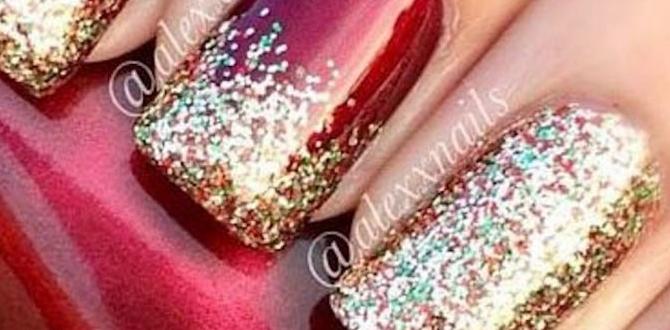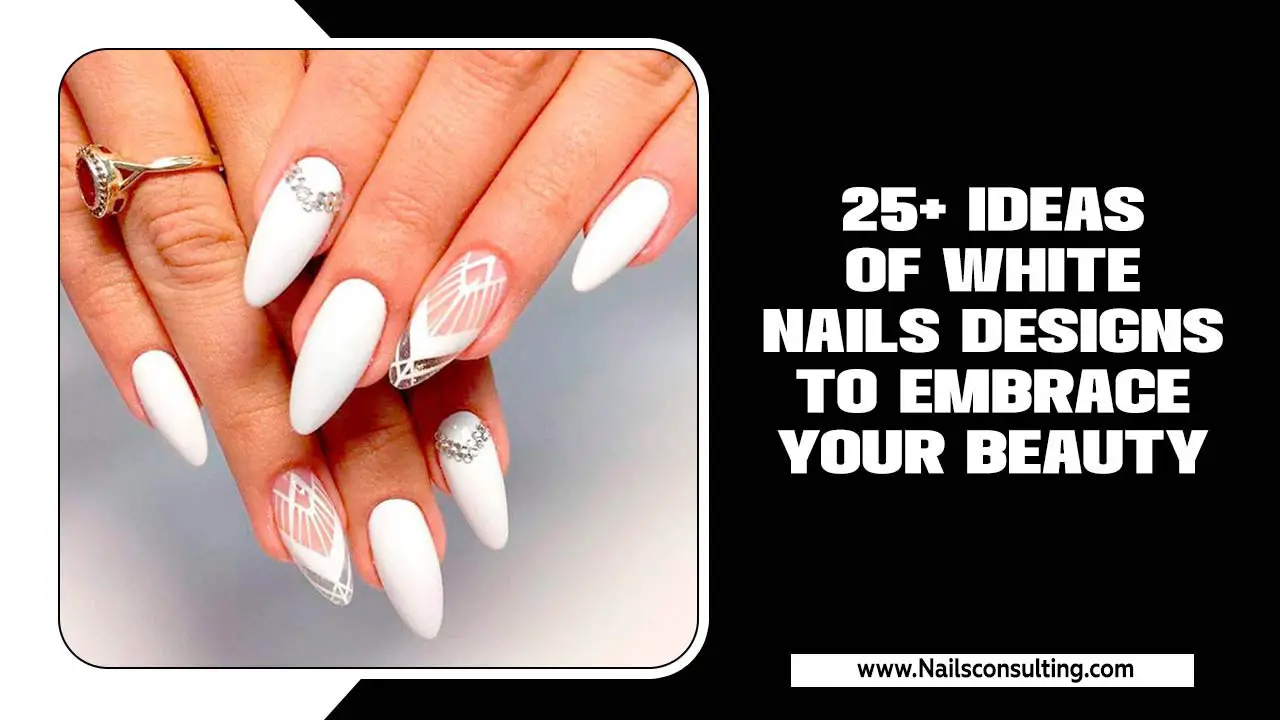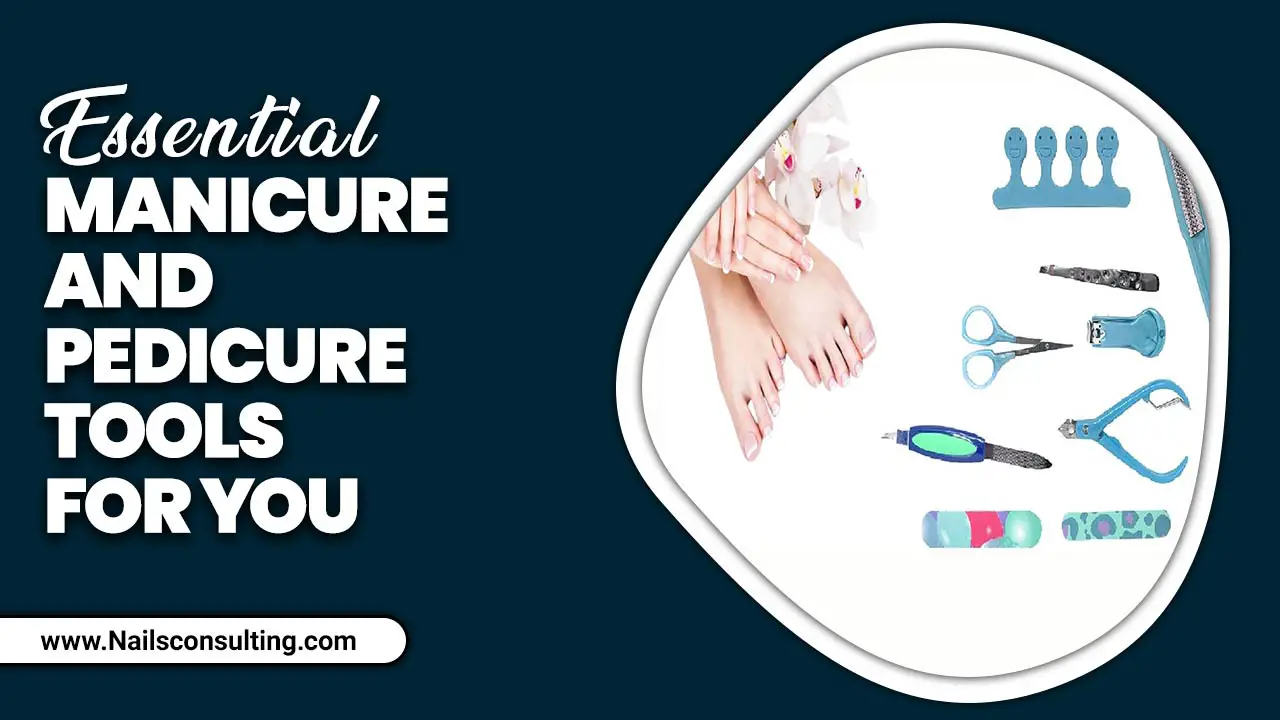Victorian nail designs offer an elegant way to elevate your manicure with historical charm and sophisticated aesthetics. Learn the essential elements and simple techniques to create stunning Victorian-inspired looks at home.
Do you dream of nails that whisper tales of elegance and bygone eras? Victorian nail designs are like tiny works of art, bringing intricate beauty and a unique flair to your fingertips. If you’ve ever felt a little intimidated by detailed nail art or wondered how to capture that vintage magic, you’re in the right place! We’ll break down the essentials, show you what makes these designs so special, and guide you through creating your own show-stopping Victorian-inspired manicures. Get ready to add a touch of timeless glamour to your nails!
Unveiling the Charm of Victorian Nail Designs
Victorian nail designs are more than just a trend; they’re a nod to an era of intricate artistry, delicate details, and refined beauty. Think of ornate patterns, rich colors, and a sense of classic sophistication. These styles draw inspiration from the art, fashion, and culture of the Victorian era (roughly 1837-1901). During this period, personal grooming and adornment were highly valued, and nails, while often kept shorter and more understated than today’s long extensions, were meticulously cared for.
The aesthetics of Victorian nail art often feature:
- Delicate Florals: Roses, lilies, and other blooms were popular motifs.
- Intricate Lace-like Patterns: Mimicking the luxurious fabrics of the time.
- Gothic Influences: Darker colors and dramatic elements.
- Filigree and Scrolls: Swirling, ornamental designs.
- Pearls and Gems: Small, elegant embellishments.
- Rich Color Palettes: Deep reds, burgundies, emeralds, navy, and classic black, often accented with gold or silver.
While the Victorian era itself favored more subdued nail colors – think rosy tints or clear polishes to highlight healthy nails – modern interpretations embrace a wider spectrum of colors and bolder designs that capture the spirit of Victorian artistry. It’s about invoking that feeling of history, romance, and a touch of the dramatic.
Essential Elements for Your Victorian Nail Art Toolkit
Before diving into creating your own majestic Victorian designs, let’s gather the essential tools and materials. Don’t worry, you don’t need a professional salon’s worth of equipment! Many of these are common nail art staples, and a few key additions will help you achieve that authentic Victorian vibe.
Nail Prep Essentials
- Nail File & Buffer: For shaping and smoothing your nails.
- Cuticle Pusher/Remover: To keep your cuticles neat and tidy.
- Base Coat: Protects your natural nails and helps polish adhere better.
- Top Coat: Seals your design and adds shine, making your manicure last longer.
Color Palette Staples
- Deep, Rich Polishes: Burgundy, deep red, forest green, navy blue, black, and charcoal grey are fantastic bases.
- Metallic Accents: Gold, silver, or bronze polishes or paints for intricate details.
- Neutral Tones: Cream, beige, or soft pinks can be used for softer, lace-like designs.
Specialty Tools for Victorian Designs
- Fine-Tip Nail Art Brushes: Essential for drawing delicate lines, scrolls, and floral details. Look for brushes with very thin bristles to achieve precision. A set with various tip sizes can offer more versatility.
- Dotting Tools: Perfect for creating small dots, which can be used to form patterns or fill in floral centers. They come in various sizes.
- Striping Tape: Thin adhesive tape that creates sharp, clean lines, ideal for geometric Victorian patterns or segmenting different colors.
- Stamping Plates: Many stamping plates feature intricate Victorian patterns like lace, filigree, and floral motifs. You’ll also need a stamper and scraper.
- Rhinestones & Pearls: Small, clear or pearl-like beads can add a touch of regal sparkle, especially when placed strategically.
- Dotting Tool Stick: Often comes with a fine point on one end and a ball tip on the other.
- Nail Art Glue: To securely attach embellishments like rhinestones and pearls.
- Small Palette or Tile: To mix polish colors or create gradients for your brushes.
Where to Find Quality Tools
For reliable nail art tools, reputable beauty supply stores are a great starting point. Online retailers like Amazon, AliExpress, and dedicated nail art supply websites (e.g., Born Pretty Store, Madam Glam) offer a vast selection of brushes, stamping plates, and embellishments. When choosing brushes, feel for a good grip and responsive bristles. For stamping, look for plates with deep etching – this helps pick up the polish more effectively.
Beginner-Friendly Victorian Nail Design Techniques
Ready to get creative? Let’s explore some simple yet stunning techniques perfect for beginners wanting to dip their toes into Victorian nail art. The key is to start with simpler patterns and gradually explore more complex ones as your confidence grows.
Technique 1: The Classic Deep Shade with a Metallic Accent
This is perhaps the easiest way to achieve a Victorian feel. It’s elegant, requires minimal artistic skill, and looks incredibly chic.
- Prep Your Nails: Start with clean, dry nails. File them to your desired shape and push back cuticles. Apply a good base coat.
- Apply Your Base Color: Paint all your nails with a rich, deep polish like burgundy, navy, or deep green. Apply two thin coats for full, even coverage. Let it dry completely.
- Add the Metallic Accent:
- Option A (Freehand Line): Using a fine-tip gold or silver nail art brush and metallic polish, carefully paint a thin line along your smile line (the free edge) or at the base of your nail.
- Option B (Stamping): If you have a stamping plate with a metallic image (like a delicate vine or border), apply a thin layer of metallic polish to the design, scrape off the excess, and stamp it onto the tip or base of your nail.
- Option C (Dotting): With a small dotting tool and metallic polish, add a few carefully placed dots along the cuticle line or to create a simple vine design.
- Seal Your Design: Once the accent is completely dry, apply a generous layer of shiny top coat to protect your artwork and add a professional finish.
Technique 2: Elegant Lace-Inspired Patterns
Lace was a significant element of Victorian fashion, and it translates beautifully to nail art. This technique can seem complex, but with the right tools, it’s very manageable.
- Prep and Base Color: Prepare your nails and apply a base coat. For a classic lace look, a nude, soft pink, or white polish works best as a base. Apply one or two coats and let it dry thoroughly.
- Create the Lace Effect:
- Option A (Stamping): This is often the easiest method for beginners. Select a lace or intricate floral stamping plate. Apply white or black polish to the etched design, scrape, and stamp onto the nail. You can stamp over the entire nail or just on the tips.
- Option B (Freehand with Fine Brush): If stamping isn’t an option, take your finest nail art brush and white, black, or metallic polish. Start by drawing delicate lines, dots, and small curves to mimic a lace pattern. This takes patience! Think of creating tiny loops and connecting them. Practice on paper first!
- Option C (Dotting Tool Pattern): Use a dotting tool and contrasting polish (e.g., black dots on a white nail) to create small, repeating patterns. Connect dots to form lines or small floral shapes.
- Add Finishing Touches (Optional): If you used a white base, a black or deep red lace pattern can be striking. You can also add a tiny pearl or rhinestone at the base of the nail for extra elegance.
- Top Coat Seal: Carefully apply a top coat to lock in your lace-inspired design. Be gentle to avoid smudging the delicate details.
Technique 3: Victorian Floral Accents
Flowers were a significant motif in Victorian art and decor. Adding a touch of floral beauty introduces romance and a touch of nature.
- Prep and Single Color Base: Prep your nails and apply a base coat. Choose a sophisticated base color like a deep emerald green, sapphire blue, or a muted rose pink. Apply two coats and let dry completely.
- Paint Your Floral Accent:
This is where your fine-tip brushes come in handy!
- Simple Rose: With a fine brush and dark red or pink polish, paint a swirl to form the center of the rose. Then, add small, curved strokes around it to create petals. Don’t aim for perfection; organic shapes look more natural.
- Delicate Stem & Leaves: Using a fine brush and green polish, paint a delicate stem extending from the base of your nail or across a section of it. Add small, elongated leaf shapes along the stem.
- Dotting Tool Blooms: Use a dotting tool to create small dots in a circular pattern to form a flower. You can layer colors for depth.
Focus on doing this on one or two accent nails (like your ring fingers) for a sophisticated look.
- Add Details (Optional): A tiny dot of gold polish in the center of a flower can add a touch of radiance.
- Seal and Shine: Apply a clear top coat to protect your floral artwork.
Advanced Victorian Nail Design Ideas for the Inspired
Once you’ve mastered the basics, you might feel ready to explore more intricate and elaborate Victorian-inspired nail art. These designs often combine multiple elements and techniques to create truly breathtaking results.
The Opulent Filigree Manicure
Filigree jewelry, with its delicate metalwork, is a perfect inspiration for intricate nail art.
- Base: Start with a dark, glossy base color like black, deep emerald, or rich plum.
- Filigree Design: Using a fine-tip nail art brush or a striping tape technique, create swirling, intertwined patterns reminiscent of filigree metalwork. Metallic gold or silver polishes are ideal for this. Think of creating intricate arabesques, scrolls, and loops. This is where patience and a steady hand truly shine.
- Embellishments: Strategically place tiny rhinestones or seed beads at the intersections of your filigree lines or along the cuticle for added opulence.
- Seal: A high-gloss top coat will give this design a polished, jewel-like finish.
Gothic Romance Nails
Drawing from the more dramatic and mysterious side of the Victorian era, gothic romance nails combine dark colors with romantic motifs.
- Base: A deep crimson red, black, or dark purple is your foundation.
- Gothic Motifs:
- Black Lace: Paint a black lace pattern over a deep red or burgundy base.
- Dark Florals: Use a fine brush to paint dark roses or other dramatic flowers in shades of deep red, black, or deep purple on a black base.
- Gothic Borders: Use metallic polish (gold or silver) to create ornate borders along the tips or bases of your nails.
- Details: Consider adding tiny black or deep red rhinestones for a touch of ominous sparkle.
- Finish: A matte top coat can add a wonderfully gothic, velvety texture, or opt for a high-gloss finish for a more dramatic sheen.
The Cameo and Pearl Ensemble
Cameos were highly fashionable during the Victorian era, and their delicate profile can be recreated on nails.
- Base: A soft, pearlescent pink, ivory, or a muted blue works beautifully as a base to mimic shell or porcelain.
- Cameo Effect: This can be achieved through hand-painting a profile silhouette in a contrasting color (like a pale pink on ivory, or a shadow effect on a darker base) using an ultra-fine brush. Another method is to use special cameo stickers or decals designed for nail art.
- Pearl Embellishments: Gently adhere small pearl beads along the cuticle line or at the base of your accent nail using nail art glue.
- Top Coat: A classic glossy top coat will enhance the delicate beauty of this design.
Caring for Your Victorian Nail Designs
Creating beautiful Victorian nail art is rewarding, but proper care will ensure it stays looking its best.
During Application
- Patience is Key: Allow ample drying time between layers, especially for intricate designs. Rushing can lead to smudges and ruined artwork.
- Steady Hand: If freehand painting, rest your wrists on a stable surface. You can even steady your painting hand with your other hand’s little finger.
- Clean Up Mistakes: Keep a fine-tipped brush dipped in nail polish remover nearby to carefully clean up any stray lines or smudges before the polish dries completely.
Maintaining Your Manicure
- Gloves are Your Friend: Wear rubber gloves when doing household chores like washing dishes or cleaning with harsh chemicals. These activities can chip and dull your polish.
- Avoid Harsh Activities: Try not to use your nails as tools – for example, to open cans or scrape labels. This is a sure way to chip any design.
- Reapply Top Coat: Every 2-3 days, apply another thin layer of top coat. This helps to refresh the shine and protect the design from wear and tear.
- Moisturize: Keep your cuticles and the skin around your nails hydrated with cuticle oil or hand lotion. Healthy skin makes any manicure look more polished.
- Gentle Removal: When it’s time to remove your polish, use a good quality nail polish remover with a gentle formula, preferably acetone-free for less drying.
Comparing Victorian Nail Design Methods
To help you choose the best approach for a particular design, here’s a quick comparison of common Victorian nail art techniques:
| Technique | Description | Beginner Friendliness | Level of Detail | Best For |
|---|---|---|---|---|
| Freehand Painting | Using brushes to draw designs directly on the nail. | Moderate (requires practice) | High (infinite possibilities) | Floral accents, delicate lines, custom patterns, scrolls. |
| Stamping | Using etched plates and a stamper to transfer designs. | High (especially for intricate patterns) | Very High (precise, repeatable) | Lace, complex geometrics, detailed borders, quick intricate designs. |
| Dotting Tools | Creating designs using small dots of polish. | High | Moderate (for dot-based patterns) | Floral centers, small repeating patterns, creating texture. |
| Stickers/Decals | Applying pre-made nail art images. | Very High | Moderate to High (depends on decal quality) | Quick accents, cameos, intricate pre-designed motifs. |
| Striping Tape | Using thin adhesive tape to create sharp lines and sections. | High | High (for geometric patterns) | French tips with a twist, color blocking, sharp geometric lines. |
Frequently Asked Questions About Victorian Nail Designs
Q1: Are Victorian nail designs difficult to do for beginners?
Not at all! While some Victorian designs can be intricate, many simple bases like deep colors with a metallic accent or basic floral outlines are very achievable for beginners. Starting with techniques like stamping or using dotting tools can also make it much easier.
Q2: What colors are most associated with Victorian nail art?
Traditionally, Victorian aesthetics favored subtle colors. However, for modern interpretations, deep, rich jewel tones like burgundy, emerald green, sapphire blue, deep red, oxblood, and black are very popular. Metallics like gold and silver are excellent for accents.
Q3: Can I use regular nail polish for these designs?
Yes, absolutely! Regular nail polish is perfect for Victorian nail designs. For fine details, investing in good quality nail art brushes and polishes with good pigmentation will make a big difference. You might also consider using acrylic paints for ultra-fine detail work, as they often offer more control for elements like delicate lace or fine lines.
Q4: How do I make intricate lines and details without smudging?
The key is patience and allowing layers to dry. For fine lines, use a very thin, good quality nail art brush. Rest your hands on a stable surface. If you’re struggling with smudging, consider using acrylic paints designed for nail art, as they dry faster and can be easier to control for very






